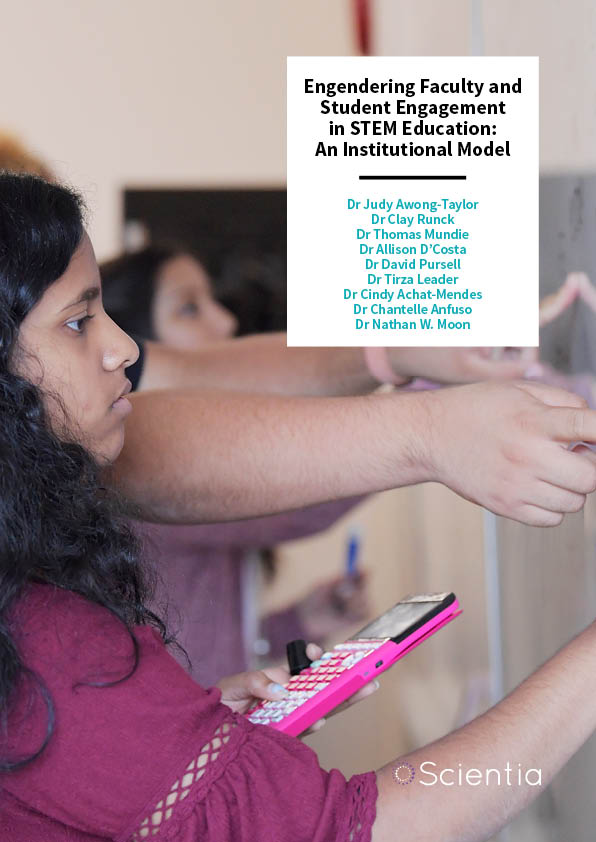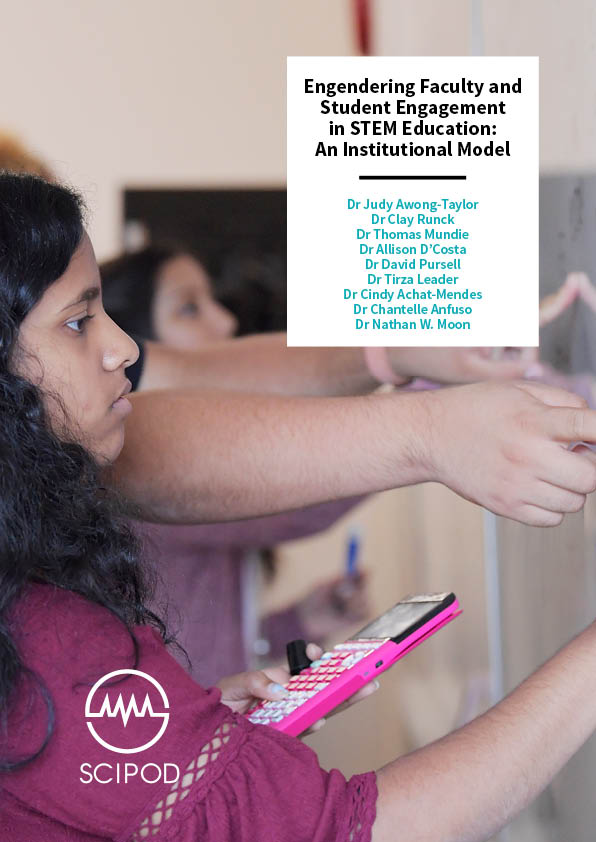Engendering Faculty and Student Engagement in STEM Education: An Institutional Model
An interdisciplinary team at the School of Science and Technology, the School of Education, and the School of Liberal Arts at Georgia Gwinnett College (GGC), are increasing student engagement in Science, Technology, Engineering, and Math (STEM) courses, through embedded research experiences. Their innovative systems-level approach employs bidirectional interactions between students and faculty and High Impact Practices (HIPs) to increase graduation rates and prepare students for their future STEM careers.
The STEM Education Innovations Program
Past research has highlighted the need for educational institutions to integrate practices that have been found to be effective in training students in STEM subjects, ensuring that the skills they learn are retained and that they are well-equipped to pursue a career in the field they are preparing to enter.
To address this, a team at Georgia Gwinnett College (GGC), in Lawrenceville, Georgia, has developed and applied a new institutional model of teaching STEM disciplines that is centred around extensive research experiences aimed at improving learning and increasing student engagement. Their aim is to increase the enrolment and retention of students in STEM subjects and to support under-prepared and under-represented students to pursue careers in science and engineering.
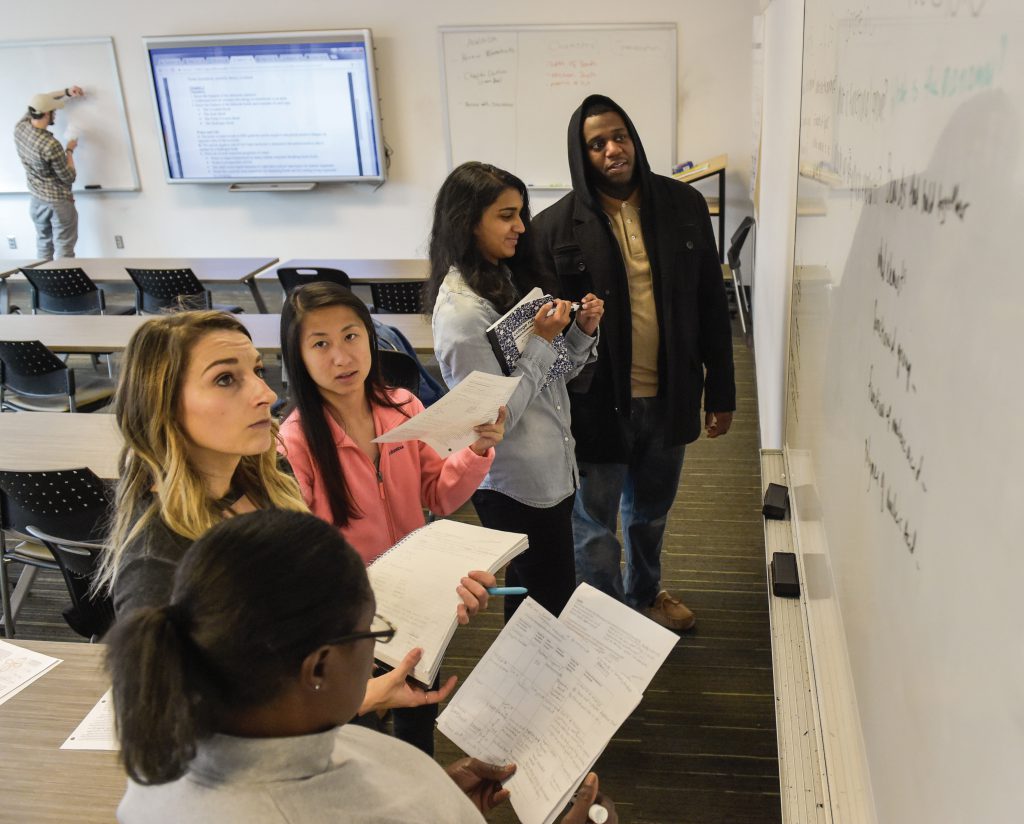 The institutional model at GGC includes four key High Impact Practices (HIPs), teaching and learning methods that have been found to be particularly beneficial for college students. These HIPs, now recommended by the Association of American Colleges and Universities, include Course-embedded Undergraduate Research Experiences (CUREs), Peer Supplemental Instruction (PSI), Faculty Learning Communities and Service Learning.
The institutional model at GGC includes four key High Impact Practices (HIPs), teaching and learning methods that have been found to be particularly beneficial for college students. These HIPs, now recommended by the Association of American Colleges and Universities, include Course-embedded Undergraduate Research Experiences (CUREs), Peer Supplemental Instruction (PSI), Faculty Learning Communities and Service Learning.
In developing their model, the researchers at GGC adopted a systemslevel approach. Systems-thinking is a relatively new approach to educational reform, designed to bring about institutional change that leads to more engagement among students, faculty and staff.
Systems-level approaches take the different contexts and cultures within an institution into consideration, including departments, the college, the institution as a whole, and other external groups collaborating with the institution. This approach also focuses on other elements that could facilitate or prevent change, including evaluation/reward systems, workload allocation, professional development opportunities, and leadership practices and how different factors can influence faculty choices related to teaching practices.
The team at GGC has identified several key levers for change, including faculty and student support at the micro-level, curriculum at the meso-level, and institutional support at the macro-level. Their institutional model entails key HIPs and activities that have been found to be particularly effective for each one of these levers (see figure one).
Curriculum
At a meso-level, the model provides rigorous research-based curricula designed to foster STEM competencies. It includes Course-embedded Undergraduate Research Experiences (CUREs), a HIP that has been found to effectively increase student engagement and student learning in STEM disciplines.
The CURE model developed by the team, in which students participate in research and creative experiences, is the Fouryear Undergraduate Research and Creative Experience (4YrURCE) Program. Initially, faculty members in biology, chemistry, information technology, mathematics and exercise science prepared a list of discipline-specific research or creative skills that they considered essential for the students to succeed. Faculty then identified specific courses in each year of a four-year degree program in which research and creative experiences would be embedded.
Thus, in a four-year degree program, students are provided repeated opportunities for students to acquire STEM work-force skills and competencies which builds students’ confidence in their ability to pursue a career in STEM and ultimately translates into greater student retention in STEM degrees (see figure two). For example, the biology faculty at the college designed a course-embedded research experience that integrates ecology (juniors) and cell biology (sophomore) courses using taxonomy and bar-coding to identify insect species.
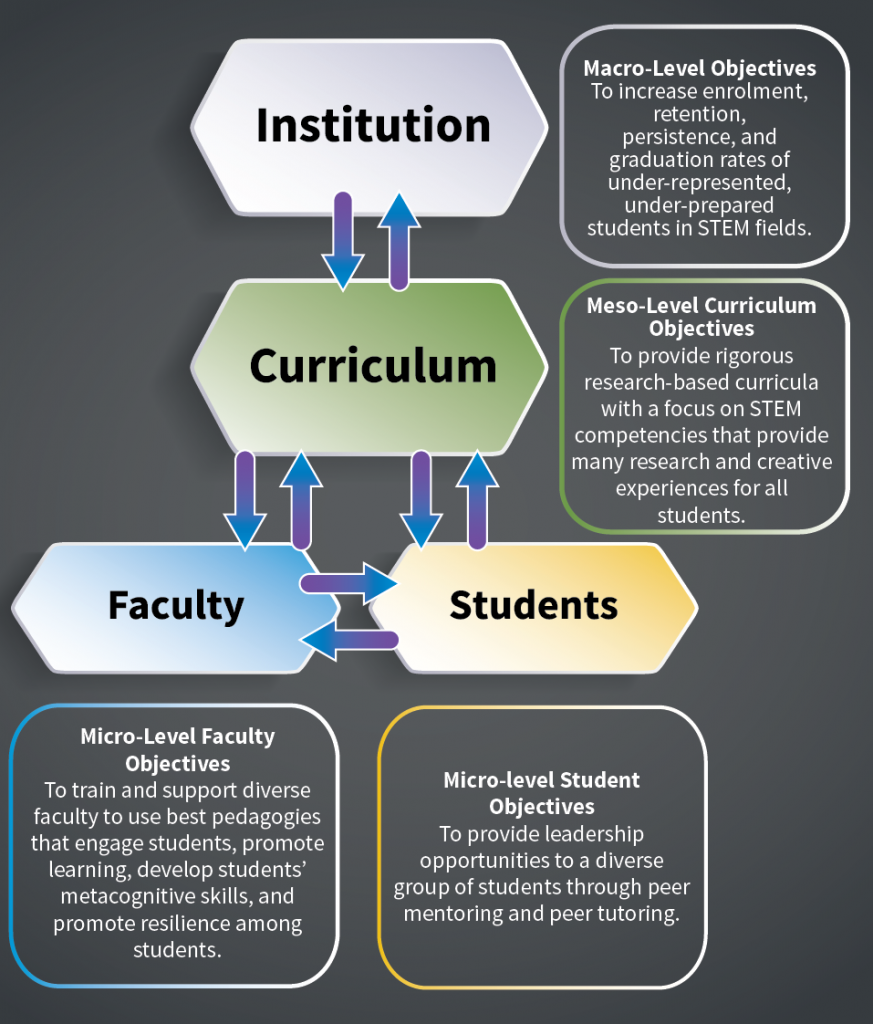
Figure One
Students
On a micro-level, GGC’s model includes evidence-based activities and initiatives targeting students and faculty. A key component of the STEM education initiative at GGC is Peer Supplemental Instruction (PSI), a collaborative study practice in which peer student leaders facilitate structured study sessions for students who are taking gateway courses in biology, chemistry, mathematics and information technology. In these sessions, peer leaders help students practice course material using a variety of active-learning strategies.
These peer leaders are students who have already succeeded in these courses and are trained in how to prepare lesson plans that incorporate STEM skills and active learning strategies. In this practice, leaders have the opportunity to develop their soft professional skills including, STEM communication, leadership, and teamwork, which will undoubtedly prepare them for the transition to post-baccalaureate education or STEM careers. Past research has found that individuals who perform tasks cooperatively performed 66% better than those learning alone.
Most students participating in PSI sessions at GGC give very positive feedback for these sessions, saying that they find them useful and that PSI helps them to develop better study skills, improve their understanding of course material, and strengthens their confidence in their abilities. Preliminary data also shows a correlation between student grades and attendance at PSI.
The Service Learning component of the model provides STEM majors with leadership opportunities to use their STEM knowledge and skills to run inquiry-based hands-on labs for fifth-grade elementary students. To do this, GGC partners with local elementary schools, where undergraduate students lead science lab activities that enrich the fifth-grade science curriculum and are aligned with Science and Engineering Practices (Next Generation Science Standards). This allows undergraduate students the chance to gain valuable publicspeaking experience as well as serve as role models in the community to engage and motivate a younger generation of students in science.
Faculty
The STEM initiative at GGC was also designed to encourage collaboration between faculty from different disciplines, through the formation of Faculty Learning Communities. At GGC, implementing their institutional model encouraged greater collaboration between different faculties. For instance, the information technology and biology faculties worked to bring their students together to develop apps and animations that could help biology students to better understand different topics.
Responses collected using a faculty attitudinal survey found that over time professors developed a better understanding of the initiative, initiating greater interdisciplinary collaboration, participating in other STEM initiatives and feeling increasingly motivated to include other pedagogical approaches in their classrooms.
In addition, the model also promotes and supports studentcentred learning, encouraging faculty to engage their students and tailor their teaching around them, so that they remain motivated and acquire greater confidence in their STEM-related skills. The model is designed to foster continuous faculty development, encouraging teaching staff to adopt pedagogies that have been found to be particularly effective to engage students, develop their metacognitive skills, and foster their resilience.

Institutional Support
A comprehensive, systemic approach such as that employed at GGC also requires commitment and involvement at a macrolevel that focuses on the institution as a whole community and at the level of the School of Science and Technology.
Resources are devoted to increasing enrolment and retention of under-represented students in STEM fields through faculty development and research at the human resources and institutional level. This is supported by the involvement of the Center for Teaching Excellence (CTE) and commitment from the institution’s administrators. Institutional Research, Grants and Sponsored Research, Budget and Planning, and administrative support from the School of Science and Technology, all play a key role in ensuring the success of the model and the approach, building a solid foundation for its development.

A Promising Approach to Institutional Change
The institutional model developed by the team has already been integrated at GGC, with highly promising results. Total enrolment of STEM majors has increased from 2527 (Autumn, 2012) to 3524 (Autumn, 2017). Evaluations of the model found it had a direct positive impact on students’ academic performance, leading to improvements in their grade point average and greater retention of material covered.
Within the School of Science and Technology, the annual grade point average of STEM students increased from 2.68 in Autumn 2011, to a high of 2.96 in Autumn 2013. Over the last three years, grade point averages have remained above 2.8. Moreover, in the years after the introduction of the 4YrURCE model, STEM students were found to be retained at a higher rate than the general student population at GGC.
The average retention rate for STEM students was 84.3%, considerably higher than the 57.5% retention rate among GGC’s general student population and the 64.7% retention rate overall for underserved populations. Preliminary data also indicates that underrepresented and minority groups (Hispanics, Blacks, and Multi-Ethnic students) were retained within the School of Science and Technology at a higher rate than White students for the last two years, suggesting that the model’s high student engagement activities may play a role in retention rates of under-represented groups.
The researchers found that early participation in research during freshman and sophomore years played a part in students deciding to stick to a STEM major. In addition, student enrolment in STEM courses increased, as compared to overall enrolment at GGC. In the future, the researchers’ systemslevel approach could provide a valuable guideline for other institutions, fostering greater engagement in STEM disciplines on behalf of both students and faculty.
In a recent article in the Council of Undergraduate Research Quarterly, the researchers write: ‘While our model appears to be ambitious, we believe that it has the potential to be replicable, scalable, and attainable at different types of institutions. Results of our studies have been presented at various national conferences and they have generated much interest. Many institutions have requested information on our model, and a few have started similar pilot projects.’
Meet the Team
Dr Judy Awong-Taylor is Professor of Biology at Georgia Gwinnett College (GGC), Lawrenceville, GA, USA. She obtained her PhD in environmental microbiology from the University of Florida. Before joining GGC, Dr Awong-Taylor was a professor and interim department head at Armstrong Atlantic State University (AASU), as well as the director of the University System of Georgia’s STEM Initiative. Her interests include system-level approaches to improving undergraduate STEM education.
E: jawongta@ggc.edu
W: http://www.ggc.edu/academics/schools/school-of-scienceand-technology/stem-education-innovations/
Dr Clay Runck is Assistant Professor of Biology at GGC. He obtained his PhD in biology from Northern Arizona University. Dr Runck’s teaching interests include CUREs designed for campus-based outdoor classroom settings for introductory biology, ecology, and limnology.
Dr Thomas Mundie is Professor and Dean of the School of Science and Technology at GGC. He holds a PhD in biomedicine from the Medical University of South Carolina. His teaching interests include anatomy and physiology, and immunology. His research interests are varied including pulmonary pathophysiology, STEM retention and progression, and the role of high-impact practices on STEM RPG.
Dr Allison D’Costa has focused her research in STEM education to developing laboratory curriculum that provides students with research experiences while building essential STEM skills. She earned her PhD in Molecular and Cell Biology from Hahnemann University, Philadelphia.
E: adcosta@ggc.edu
W: https://commons.ggc.edu/adcosta/about/
Dr David Pursell served world-wide for 25 years in the US Army before joining higher education. He is currently Professor of Chemistry with research interests in environmental chemistry and chemistry education. Dave earned his PhD in Chemical Physics from the University of Pennsylvania under the direction of Hai-Lung Dai.
E: dpursell@ggc.edu
W: https://commons.ggc.edu/dpursell/
Twitter: @DrDavePursell
Dr Tirza Leader has a PhD in social psychology and specialises in methodology and analysis. She has designed, implemented, and analysed various assessments for government agencies and for private business.
E: tleader@ggc.edu
W: http://www.ggc.edu/academics/schools/school-of-scienceand-technology/stem-education-innovations/
Dr Cindy Achat-Mendes earned her PhD in Neuroscience at the University of Miami School of Medicine and trained as a Psychiatry Fellow at Harvard Medical School. She utilises cell and animal models to teach and engage undergraduates in neuroscience. She is particularly interested in identifying strategies that best promote student learning in college.
E: cachatme@ggc.edu
W: https://commons.ggc.edu/cachatme/
Twitter: https://twitter.com/achatwithme
Dr Chantelle Anfuso earned her PhD in Physical Chemistry from Emory University. Since joining the faculty at Georgia Gwinnett College, her research interests have focused on developing low-cost spectroscopic experiments for physical chemistry courses and investigating methods for supporting students in STEM courses.
E: canfuso@ggc.edu
W: https://commons.ggc.edu/canfuso/
Dr Nathan W. Moon is a Senior Research Scientist at the Georgia Institute of Technology, Atlanta, GA, and Director of Research for the Center for Advanced Communications Policy. His research interests include broadening participation in science education, accessible education, information and communications technology access, and educational evaluation.
E: nathan.moon@gatech.edu
W: http://cacp.gatech.edu/nathan-moon
FUNDING
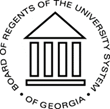
 This work is funded and supported by grants from the Board of Regents of the University System of Georgia (STEM-EIP Grant), and the National Science Foundation under NSF Award No. 1623779. Any opinions, findings, and conclusions or recommendations expressed in this material are those of the authors and do not necessarily reflect the views of the National Science Foundation or the University System of Georgia.
This work is funded and supported by grants from the Board of Regents of the University System of Georgia (STEM-EIP Grant), and the National Science Foundation under NSF Award No. 1623779. Any opinions, findings, and conclusions or recommendations expressed in this material are those of the authors and do not necessarily reflect the views of the National Science Foundation or the University System of Georgia.
FURTHER READING
J Awong-Taylor, A D’Costa, G Giles, T Leader, D Pursell, C Runck, T Mundie, Undergraduate research for all: addressing the elephant in the room, Council on Undergraduate Research Quarterly, 2016, 37, 11–19.
JE Russell, AR D’Costa, C Runck, DW Barnes, A Barrera, J HurstKennedy, EB Sudduth, EL Quinlan, M Schlueter, R Haining, Bridging the undergraduate curriculum using an integrated course-embedded undergraduate research experience (ICURE), Cell Biology Education Life Sciences Education, 2015, 14, 1–10.
A Heinz, X Xu, A D’Costa, Web-animations: An interdisciplinary approach for biology and information technology students, Integrated STEM Education Conference (ISEC), 2015, 33–37.

